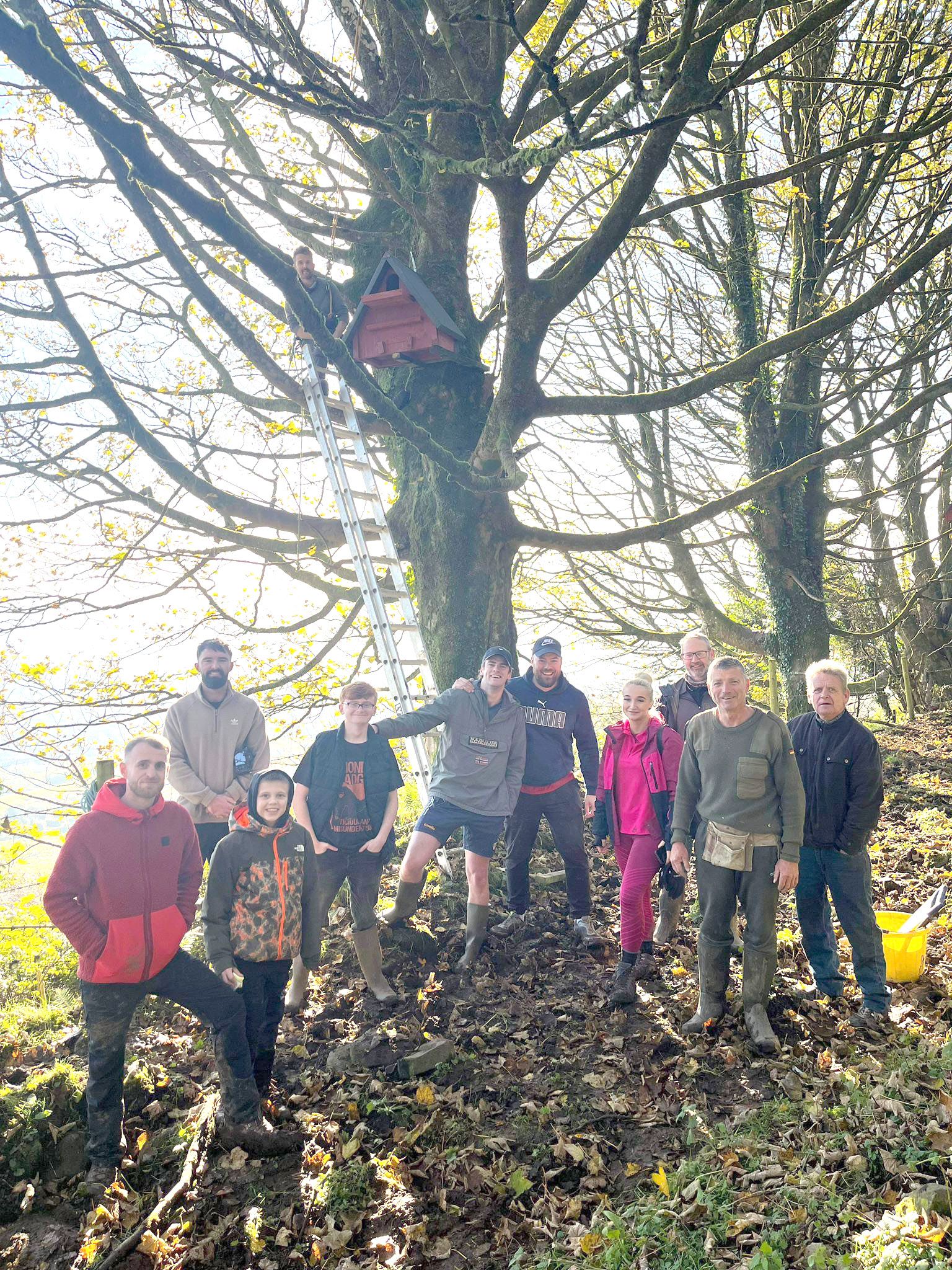SWIFTS are spectacular birds – perhaps the most spectacular of them all. They have evolved so much that they have all but abandoned land, becoming totally aerodynamic and preferring to spend their whole life on the wing. Except, of course, to breed.
And that’s where their problems start, because people have robbed them of their breeding sites. Year after year in Belfast and towns and villages throughout the country, the wall cavities they once nested in have been filled in, while newbuilds aren’t bird-friendly.
In recent years, swift nestboxes were invented. But the problem is that these birds fly so fast that they don’t stop to explore them. Then it was also discovered that blasting their calls out will lure them in.
And that’s what Dúlra has been doing at his home since May 1, when the first swifts arrived back from Africa. The neighbours mightn’t be enamoured, but that unique swift screech has been echoing over the estate. To no avail.
The last swifts were evicted from the neighbourhood about a decade ago. Dúlra remembers a pair nesting in the gable of a neighbour’s house, but after the roof was repaired for storm damage they never returned.
The swifts’ call is still being blasted out but now as we go deeper into June and most swifts will be sitting on eggs he's considering turning off the recorder and putting it back into storage until next May.
He'll give it one more week on full blast. Maybe, just maybe, there are a few singles out there still trying to find a mate and a nice home to bring up their children.
EARLIER this year, Dúlra put up a few bird feeders in the Poleglass garden of the one and only Pat Rice. And this week the retired schoolteacher was rewarded with a truly special avian visitor: a great spotted woodpecker, mórchragaire breac, as Pat would have had us call it when he was Dúlra’s Irish teacher.
The former Lisburn Sinn Féin councillor would certainly appreciate the historical resonance of this bird’s decline and rebirth in Ireland. It was a victim of the colonial clearances of the famous Irish oak forests which began in the 16th century, and as the years passed its realm shrank until it could survive no more. The last three specimens were shot in the 1840s – they were subsequently stuffed – coincidentally the decade of the Great Famine during which vast stretches of our treeless countryside were cleared of people.
One of Dúlra’s go-to books, Ireland’s Lost Birds, published in 1999, says that “the status of the great spotted woodpecker has hardly changed... with one or two turning up most winters.” But just at that time – the turn of the millennium – something inexplicable happened to this extinct bird. It was like the world tilted on its axis, creating a portal from Europe to Ireland for an army of great spotted woodpeckers to fly through. And when they emerged at the other side, they found a land that they immediately felt at home in.
Little did they know it, but it was the land of their ancestors many, many generations earlier.
So to have that fantastic bird in your garden is the ultimate sign of hope and of nature’s ability to right historic wrongs. And a reminder that when it comes to the environment, a couple of centuries are like the blink of an eye.
Comhghairdeas, Pádraig!
The 24-hour bioblitz at Mullaghglass Wetlands last week threw up a few surprises, but none as welcome as the fabulous barn owl.
Environmental supremo Aidan Crean was among volunteers checking the perimeter of the massive quarry site on the outskirts of West Belfast when they watched in wonder as an owl flew out of one of the nestboxes that had been put up there just months ago.
“It’s the first one we have seen up here and it gave us all a great boost,” said Aidan. “We obviously hoped they would use the boxes but didn’t think they would move in so quickly.
“It was simply brilliant to see it and we just hope it is nesting there and rearing a brood. What it means is that we have managed to connect the barn owls’ breeding ground from Lough Neagh all the way to the Black Mountain. With Mullaghglass, we’re now created a corridor they can travel across and hopefully thrive.”
Results of the bioblitz – during which experts in almost every wildlife field recorded all life over a full 24 hours – are still being collated, but the presence of barn owls at Mullaghglass shows how healthy this once-neglected and indeed abused outcrop of the Belfast Hills is.






